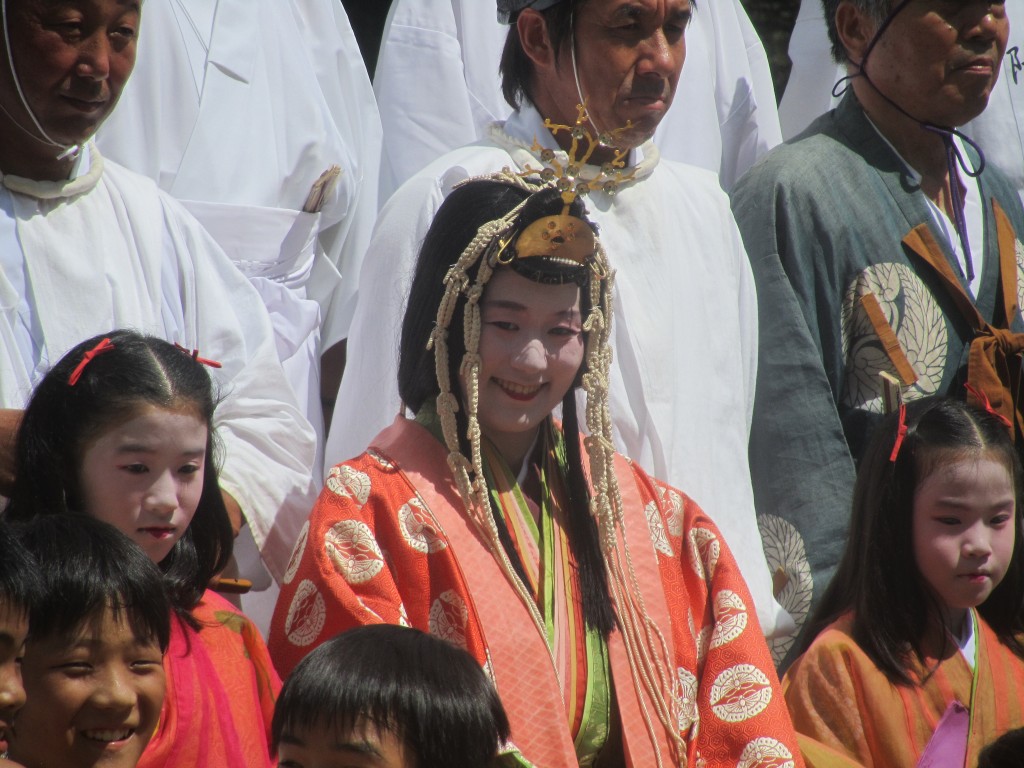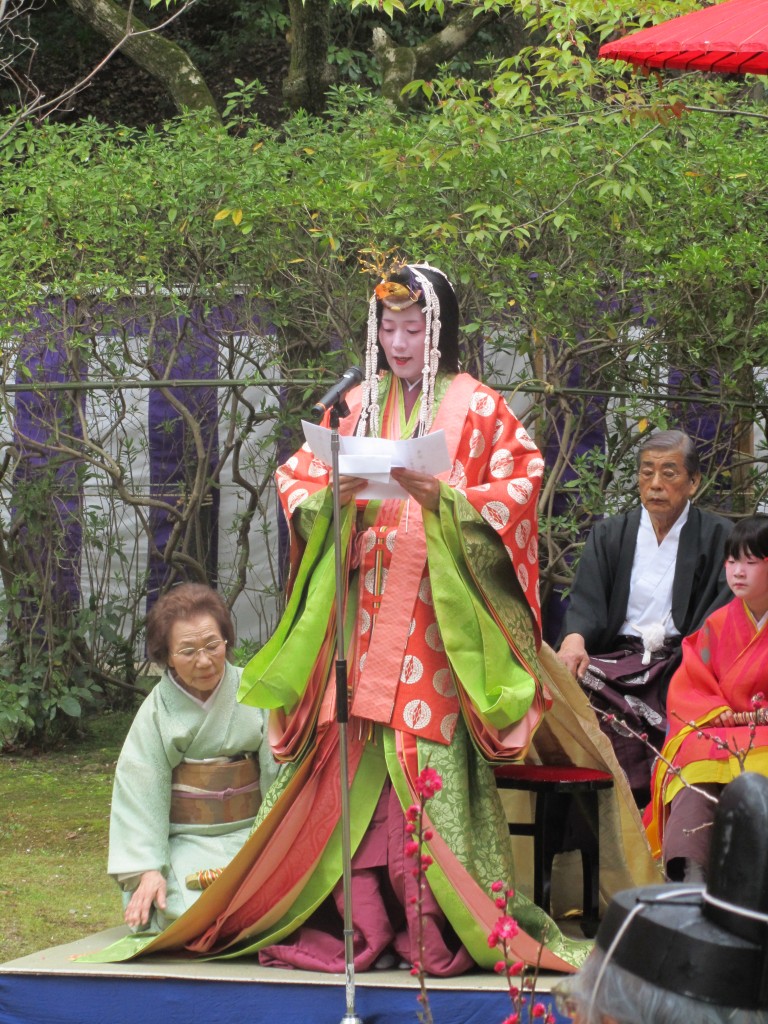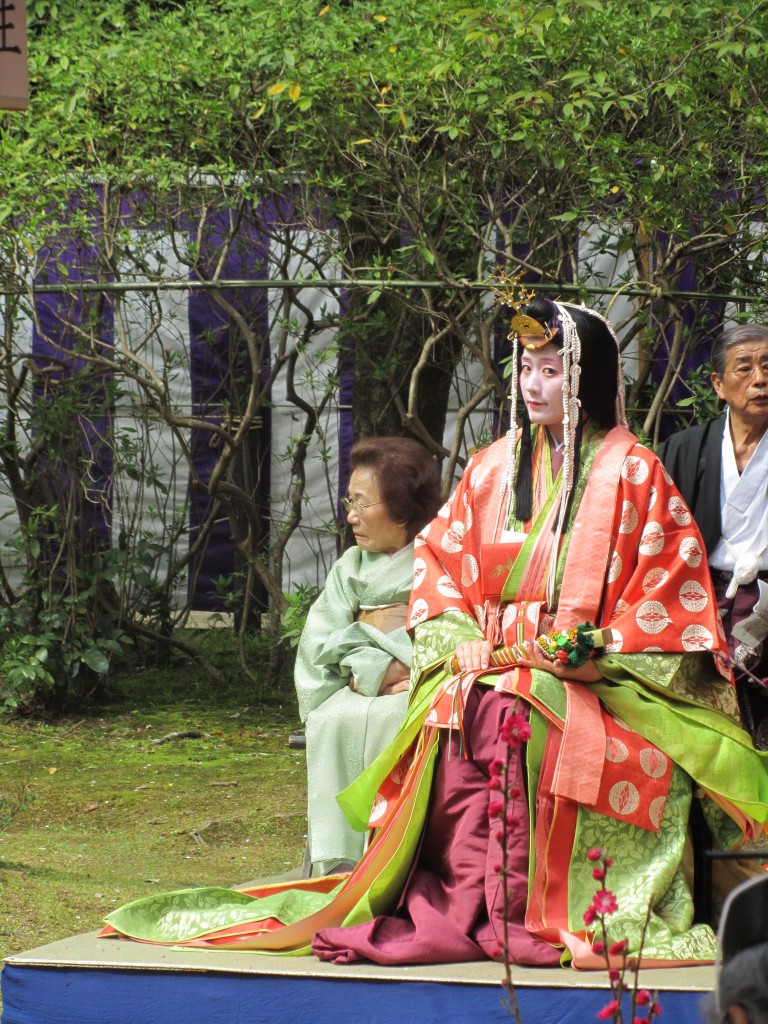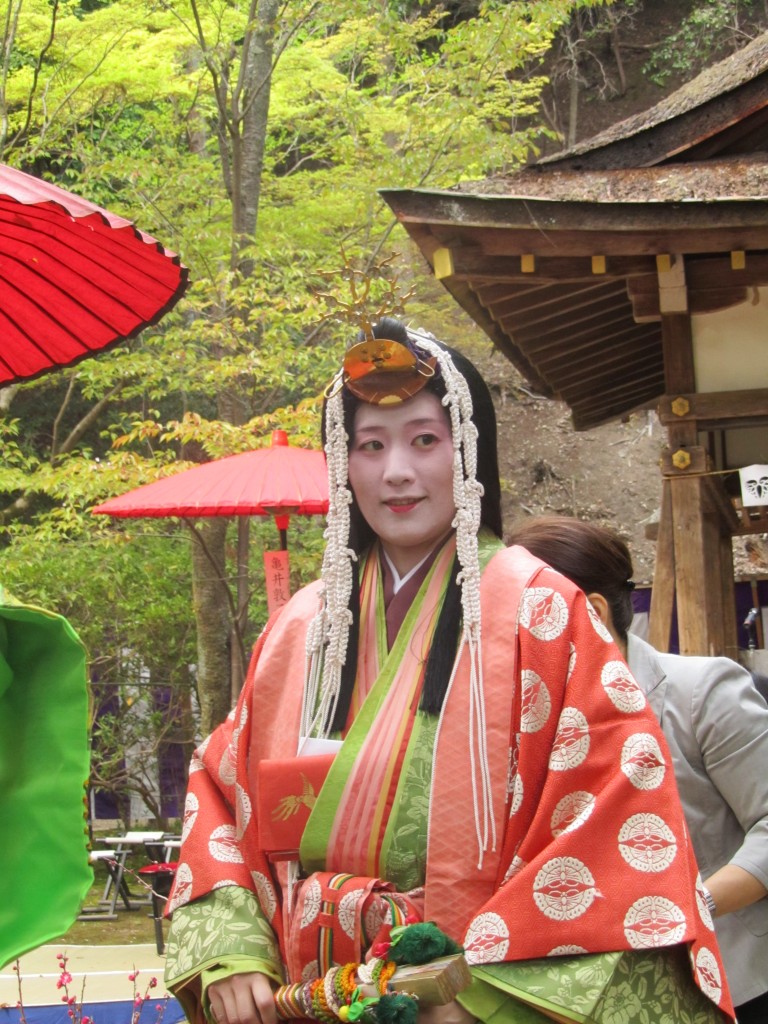
Atsuko Kamei enjoying a lighter moment in her role as Saio-dai (all photos courtesy Rachelle Soto)
Thanks to Rachelle Soto, Green Shinto has been able to learn the feelings of a Saoi-dai, about whom we have written earlier (see here). Rachelle was able to gain an exclusive interview with Atsuko Kamei, who was chosen for the role of the Saio-dai in 2012.
For those who don’t know, the Saio-dai takes a lead role in Kyoto’s Aoi Festival held each May. in which she plays the part of the imperial princess-priestess attached from 812-1212 to the Kamo shrines (Shimogamo and Kamigamo). She was a token of purity, no doubt a vestige of the shamaness of ancient times (miko) whose vaginal bodies were a vehicle to channel the will of the kami.

Proclaiming at the poetry festival in April
In 1956 it was decided to add glamour to the Aoi Festival by including a young female to play the part of the former imperial priestess, dressed in the beautiful junihitoe (twelve-layered kimono of the Heian age). It worked, as is evident by the throng of photographers that hover around the Saio-dai. She’s very much the jewel in the crown.
Regarding the selection, did she have any inkling that her name had been put forward?
The selection process is a well-kept secret and when Atsuko (age 28) learned she was being suggested she was highly honored. The mysterious selection process is done behind the scenes, though it is clear that only girls from ‘good families’ are considered worthy of the position. In days of old, the process involved divination and intuition.
What duties did she have to carry out during the year?
Selection of the new Saio-dai comes a month before the big Aoi Festival parade on March 15. Her first duty is to offer tea in kimono at a small shrine that stands on the site of the medieval Saio’s residence.
The next duty is to preside over the important pre-Aoi purification (held in alternate years at Shimogamo and Kamigamo). Then comes the main function, which is the all-day parade from the Former Imperial Palace to Shimogamo (where imperial offerings are presented) and Kamigamo (for more imperial offerings).
Afterwards she dresses up in the junihitoe (twelve-layered kimono) to preside over the Karasu-zumo festival at Kamigamo in early September and for the Heian-style poetry festival in April. Surprisingly perhaps, there are no PR activities involved – no school talks and no promotional events. Since the position is conceived as spiritual in essence, the commercial angle is eschewed, though articles in the media about the Saio-dai ensure widespread publicity for the event.

Presiding at the Kyokusui utage (poetry festival) at Kamigamo Jinja
So did the Saio-dai get a sense of spirituality?
Atsuko was like most Japanese when it came to spirituality. She visited shrines for fun but was not particularly spiritual. However, while serving in the role she felt a bond with the princesses of the past, acting with dignity and discovering a peaceful spirit in her work. She was grateful to have had the experience and honoured to serve her community as Saio-dai.
How did it feel to wear such special clothing and make-up?
It took 30 minutes in all to put on the make-up, which was traditional in style and put on as it would have been done in times past. It took a further 30 minutes for the junihitoe (twelve-layers of kimono) to be put on by two masters of the craft. In addition there was a heavy wig with hair piece.
Though Atsuko had no complaints, if one considers the whole ensemble – thick make-up, heavy wig, layers and layers of clothing, then one can see that being outside for the whole day in the warmth of a May day with no breaks for refreshment could be challenging, to say the least.
How about the pressures of being a Saio-dai?
Atsuko said it was an honour to have so many people watching her. Even off-duty, people came to her place of employment just to meet her, as it getting close to an important person in Kyoto history. Overall she was humbled by the amount of interest shown, and grateful to have been chosen for such a prestigious role in Kyoto’s oldest festival.
****************************************************
After having watched Atsuko serve as Saio-dai, and speak with her on several occasions, Rachelle Soto comments that they could not have chosen a better woman for the role. For a picture and self-penned English account of the 2011 Saio-dai (a Doshisha University student), see http://dsnews.web.fc2.com/2011-11/as_saiodai.html


Leave a Reply